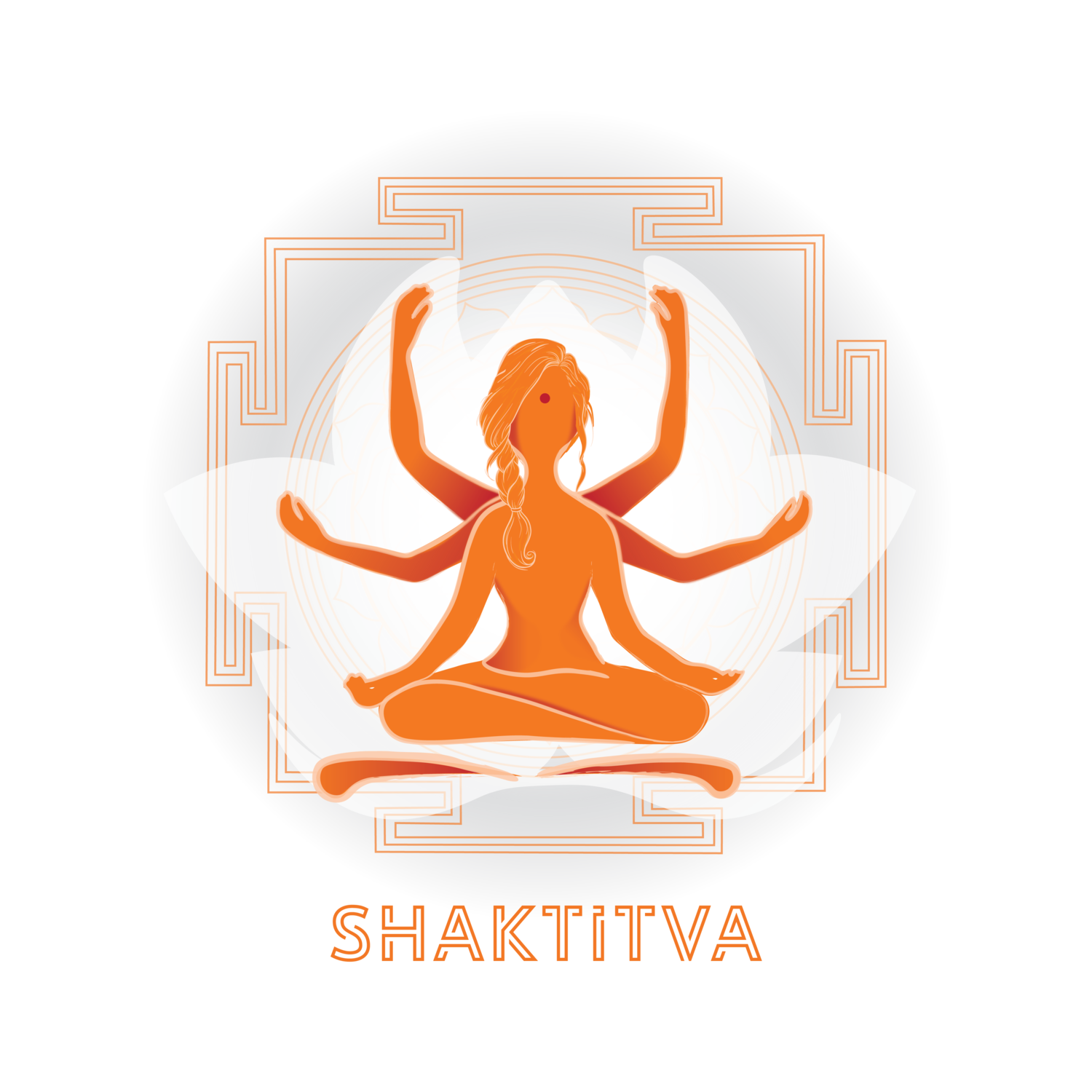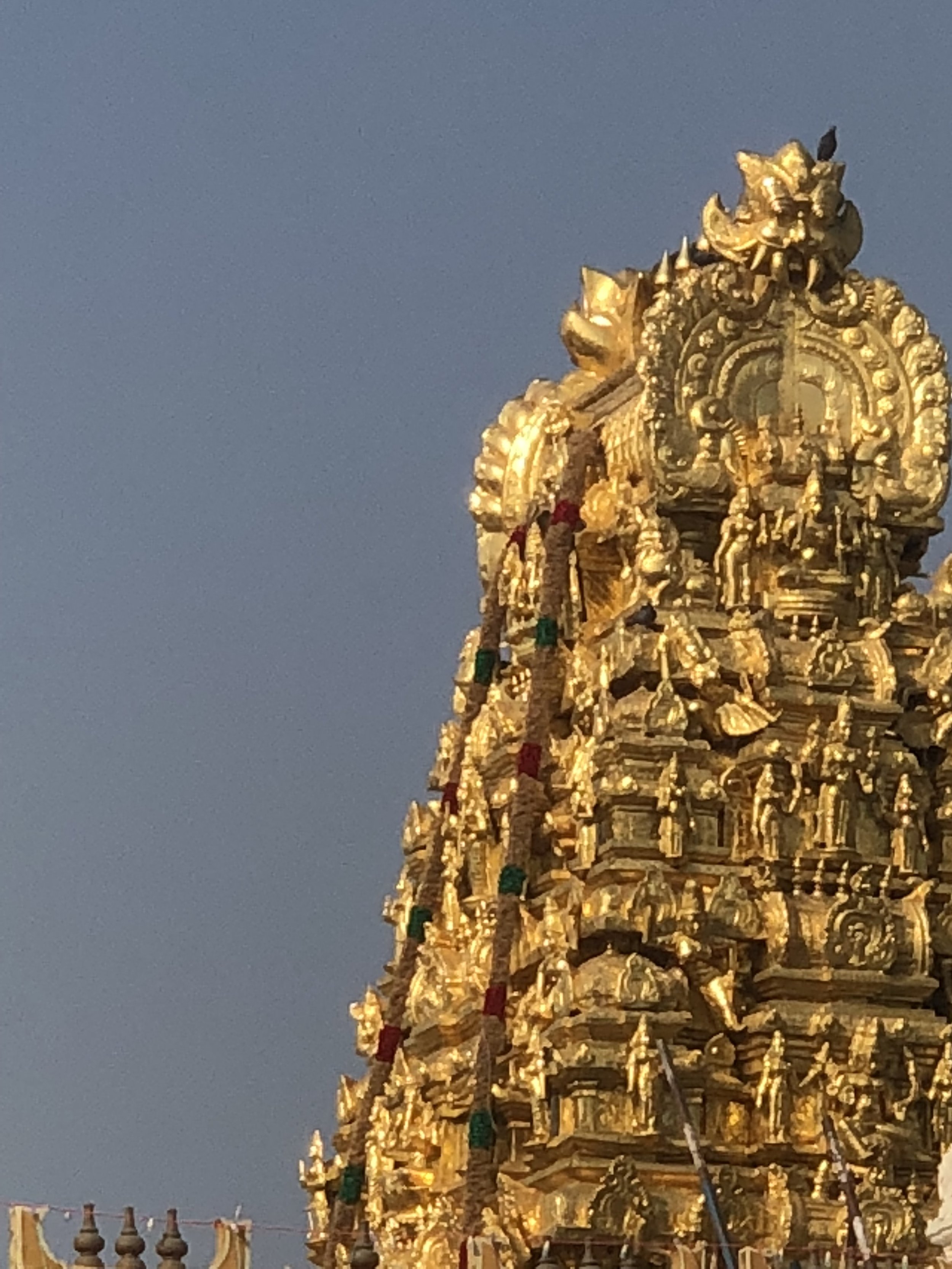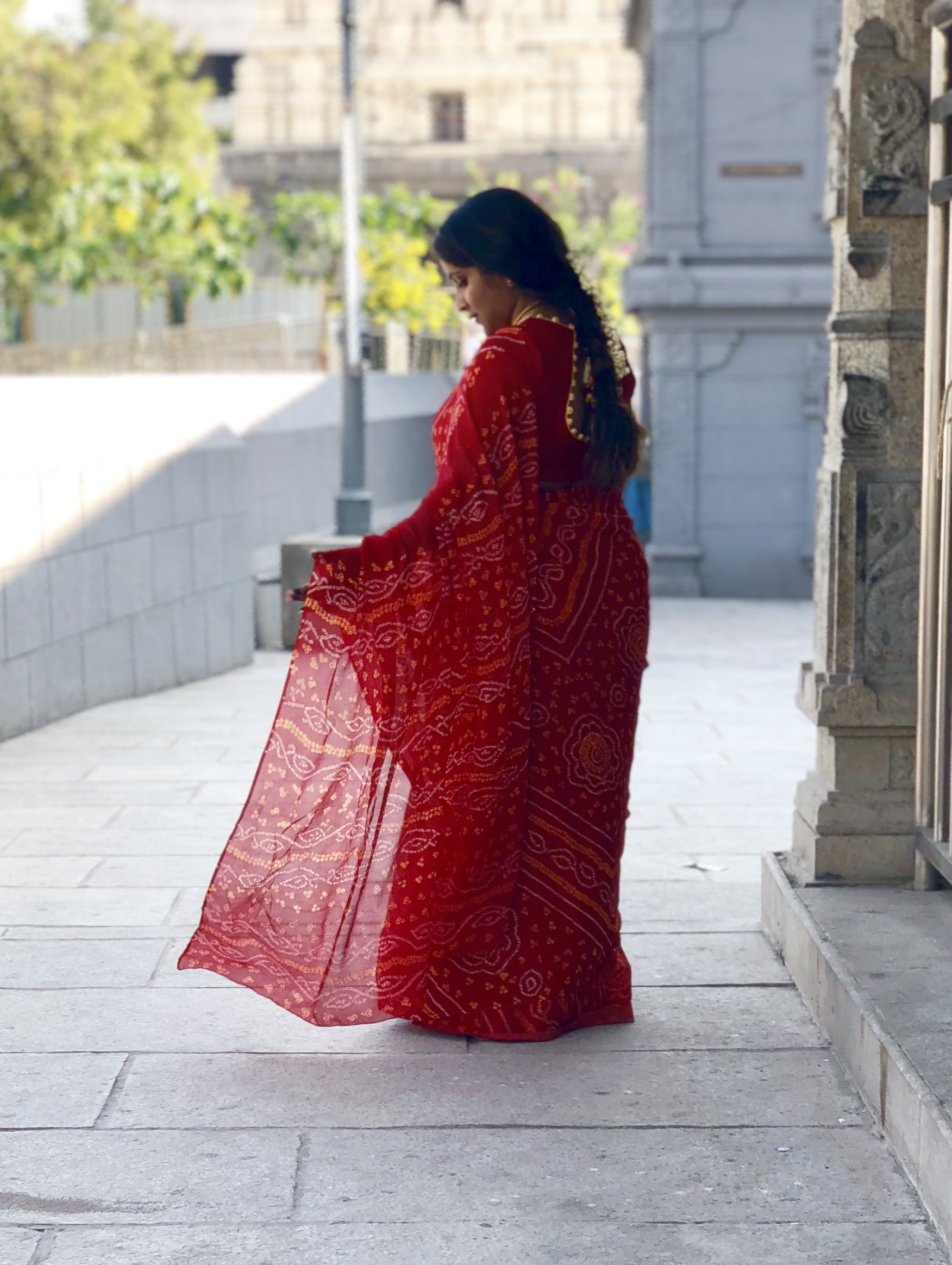Today, is the auspicious occasion of the first day of Sharada Navaratri. Navaratri, which means nine (nava-) nights (ratri), are dedicated nights for the worship of the Divine Mother and her 9 forms as understood thus:
प्रथमं शैलपुत्री च द्वितीयं ब्रह्मचारिणी। तृतीयं चन्द्रघंटेति कूष्माण्डेति चतुर्थकम् ।।
पंचमं स्क्न्दमातेति षष्ठं कात्यायनीति च। सप्तमं कालरात्रीति महागौरीति चाष्टमम् ।।
नवमं सिद्धिदात्री च नवदुर्गाः प्रकीर्तिताः। उक्तान्येतानि नामानि ब्रह्मणैव महात्मना।।
(First is Shailputri and second is Brahmacharini. Third is Chandraghanta and Kushmanda is fourth. Fifth is Skandamata and sixth is Katyayani. Seventh is Kalratri and Mahagauri is eighth. Ninth is Siddhidhatri and this is how Navadurga appear. All of these names have been given by the all-knowing all-encompassing Brahmana.)
As one meditates on each of these forms, and delves into their stories, tries to ascertain their defining features and characteristics, one becomes more and more awed in terms of the sheer diversity which represents the vastness of the Divine Mother. From the stoic daughter, to the loving doting mother, from the dedicated dharmika wife to the serene ascetic, from the mother that creates the universe with her divine smile, to the fierce warrior that could send shivers down the spines of danavas, these forms capture all possible manifestations of the feminine. They defy every preconceived notion of “masculine-feminine” binaries and show us that the world, and every emotion whether sadness or joy, every state whether darkness and light, every form of existence whether benevolent or fierce, are nothing but her manifestations. For SHE is Prakriti. SHE is Shakti.
This Navratri, we at Shaktitva Foundation want to celebrate this aspect of Shakti, with you. Like all children, her creations, which includes the entire universe and within it, us humans, carry the traits of our mother, and thus, we too possess the same variety and diversity in our thoughts and actions. We interact with her all encompassing Maya from birth to death and perhaps even after, and become different people, with a wide variety of thoughts, point of views, methods of worship. As Hindus, we feel blessed to have been shown a way to celebrate and understand the Mother, however, puny our understanding maybe.
So today, we take the opportunity to show the world, a small glimpse of the wide diversity in thoughts of Hindu women, to break the rigid definitions of what constitutes “feminist” thoughts, by celebrating true femininity, through our special series of “Nine Essays by Nine Shaktis for Navaratri”.
In this series, we will present 9 different essays, one each night of Navaratri from a Hindu woman on her experiences with Shakti. These women, together provide a sneak-peak in the diversity of not only feminist thought but Hindu thought as well. They all come from diverse backgrounds. You’ll hear voices of mothers and daughters, of North Indian and South India, of those born in Bengal to those born in United States. These women are professors, researchers, civil servants, lawyers, students, engineers, authors and entrepreneurs. These women have experienced Maya in their own unique ways and in this series, they will all write about Shakti, her myriad forms, what she means to them and the myriads forms of devotion towards her. We couldn’t think of a more appropriate way to celebrate the mother than this. So let’s join in.
Experiencing Shakti
शिव: शक्त्या यो यदि भवति श: प्रभवितुं, न चेदेवं देवो न शलु कुशल: स्पन्दितुमपि ।
अतस्त्वामाराधयां हरिहर विरिञ्चादिभिरपि, प्रणन्तुं स्तोतुं वा कथमकृत पुण्य: प्रभवति ।।
When Shiva is enjoined with Shakti, he is empowered to create. If Shiva is not thus, he is indeed unable to even move. Hence, how can one who has not performed meritorious deeds, capable of saluting or praising you, who is worshipped even by Hari, Hara, Virinchi and others?
These beautiful words from Shri Adishankara’s iconic creation, Soundarya Lahiri, perhaps best describe my dilemma in writing about the Divine Mother. How does one even begin describing her beauty, her power, her divinity, her strength, her ferocity? Capturing her all-encompassing essence in the puny form of words, is such an arduous task that it overwhelms all senses, not to mention the question that Adi Shankara poses in these lines: which of us are truly even capable of doing so? Have we even earned the right to describe Her greatness, using our expressions emerging from of our insufficient intellect and our flawed senses? But strive I must, today, to share in a few words, however, incomplete, my experience of the Divine Mother, for such is her will.
It was a spring morning when Surya Devta had come out in his full glory, which meant tiny droplets of sweat had started to appear on our foreheads, but Vaayu Devta was just as determined to meet the challenge. As soon as we entered, the gust of wind blowing over the calm, still waters of the temple tank, sent us into a serene calmness that can only be experienced. The stone flooring was still cold but I could hardly notice anything as we walked through, looking at the intricate carvings on the walls of the temple, rising all the way up to the the Shikharams. From the blinding reflections of the overhead sun from the golden shikharams, we stepped into the quiet, calm and dark doorways of the main temple. The line wasn’t too long and the air was soothing.
The Shikharam of the Kanchi Kamakshi Amman Temple
As we reached the front of the mandapam, my aunt-in-law told the priest, “These two just got married, we are here to offer our prayers to the devi. It will be our laxmi’s first visit to the devi”. The priest nodded in understanding and asked us to come around from the side, to the backside of the mandapam. We followed his directions.
Usually, this is the part where I explain the thoughts in my head. But there weren’t any. I was almost walking in a daze, quietly. Anyone who knows me, will tell you that, me walking quietly with friends and family is a rare occurrence. But only I can tell you that what was astonishingly rare, or rather impossible, was the absence of thoughts in my head. Typically, my mind is like a mini-ranbhumi (field of war), thoughts keep coming and going, colliding with each other, fighting for dominance, slaying each other even and walking with pride until another yoddha (warrior) thought rises and slays the premature winner. Now that I think about it, there is nothing mini about it. Hundreds of thoughts run amock all the time. I can’t tell if this is normal or not in the context of the world, but this is my default normal state, and yet, here I was… with no thoughts in my head, walking in this temple.
We reached behind the mandapam, where we started settling up, gathering our things. Husband dearest was told to take off his shirt for darshana, while I got busy tying my unruly hair into a braid. Mother-in-law saw me fidgeting, so she quietly walked over to me, took charge and within a few seconds, I had a perfect braid, with jasmine flowers that had emerged out of nowhere from her purse, tucked into my braid with a hairpin. I had just begun wondering what other magical things lived in her tiny purse, while I noticed that aunty had laid out the offerings to the Goddess in one plate and the 5 items to be donated to suhasinis neatly in one plate: glass bangles, haldi-kumkum, fruit, cloth piece, and mudra (money). I think the speed with which everyone sorted everything out qualifies us for the title of the most-organized-family-ever. Or maybe I am a lot more used to chaos than normal. The thoughts had obviously returned.
As we stepped into the periphery of the mandapam where the priest was standing at the doorway, there it was. Sudden overwhelming calm, again. And then my gaze fell on to the source of that calm, the small moorthi with an all-empowering presence of the Mother, Shri Kanchi Kamakshi Amman. Priest told me to sit down and look into the eyes of the mother, his instructions were clear, “ don’t look at her feet, look into her eyes! This is a shaktipeetha and the method of worshipping had to be strictly followed.” He must’ve repeated the instructions to look into her eyes, at least 5 times, but as soon as I did, it became almost impossible to look into them OR to look away. Something strange was happening that I cannot describe. Those eyes, had so much power emanating from them that I don’t even know when tears started to emerge from mine. I still haven’t fully understood what happened or how to describe it, but there I was… a new bride with my mehndi still in its deepest shade, sitting in front of the mother, crying. No thoughts were driving these tears, no sadness, no happiness, all these emotions seem so trivial in front of what I was experiencing. So I just stood there while the priest made the offerings we had brought. When he returned and he looked at my state, he smiled and nodded as if he understood exactly what was going on. I was too dazed to ask. Then he told me to extend my hand and take the handful of kumkum he had brought. I was to walk around to the right side of the mandapam, where Shakti had manifested herself from the rock. I was to rub the kumkum on her form, top to bottom. This was a Shaktipeetham since Mata Sati’s naabhi had fallen here. As I went near her, the same calmness mixed with overwhelming indescribable emotion took hold of me again and with a trembling hand, I rubbed the kumkum on Her. I saw the naabhi. I marvelled at it. I stood there staring, when mother-in-law nudged me to pray and ask for blessings. I tried, but no thoughts would form in my mind. I couldn’t think of anything I could ask her, or anything I needed or wanted in that moment. So I just folded my hands, closed my eyes and bowed.
Picture Copyright: Neha Srivastava
Other people were gathering up in that area for their turn, so we left after taking aarati and providing dakshina to the very deft archaka who was proficient in 5 languages, at least 3 of which he had to switch between when talking to our multi-cultural north-south family. Hindi for me, Kannada for my aunty and Tamizh for my husband. He knew English too and so did all of us, but in our very brief interaction, it was mutually established, without uttering a word, that English would be least preferred.
As we stepped out, mother-in-law and aunty, began to gather 5 suhasinis (married Dharmika women) for us to give our gifts and receive their blessings for the new bride, me. That is the beauty of Dharma all perhaps, that despite the fact that I came from as far up north as they are from the south, despite the fact that our family is a combination of not 2 but 3 states, we knew exactly what needed to be done. For each of the suhasinis, I handed the gifts we had brought, and even though I didn’t speak their language, I understood their blessings as I touched their feet. Some couldn’t have been older than me and some were even younger than I was, but there was no hesitation between us. We knew our roles and our places.
Dharma is a language of its own, I think, allowing us to communicate through simple gestures and our eyes without the need for language, or words.
That temple visit to Shri Kanchi Kamakshi Amman Temple in Kanchipuram, Tamil Nadu was one of the many experiences I’ve been blessed to have throughout my life.
Shaktitva, in part was born from the desire to share these experiences of the Divine Mother with her children, sons and daughters alike, so that she, the Mahamaya, herself can guide us, as we struggle to navigate these treacherous waters of her Mayavi world. Life, as we know it, society as we know it and all its inherent struggles, the demons we face and the battles we fight, are all her will and her creation. The answers of our deepest and shallowest questions, our struggles to understand our role in this world as well as our Dharma in day-to-day life, perhaps lie in trying to understand Her, the Shakti, the ever-flowing, the dynamic, the pure, undistilled emotion, chaotic and imprecise Prakriti and her interplay with Shiva, the Purusha, the immovable, calm, composed and serene Yogi. If we succeed in understanding how these two exist in perfect synergy, together, then perhaps, we would be that much closer to understanding our own roles, our choices, our dreams and our desires better and our own interactions better, which will enable us to set ourselves on the path of Dharma.
Seeking guidance from the Mother, is the only way I have ever known how to live and today, I pray to her, that she guides all of us in traversing our way through the treacherous times of the present age.
***
आवाहन न जानामि, न जानामि विसर्जनाम्। पूजां चैव न जानामि, क्षम्यतां परमेश्वरि।।
मन्त्रहीनं क्रियाहीनं भक्तिहीनं सुरेश्वरि। यत्पूजितं मया देवि परिपूर्णं तदस्तु मे।।
(I do not know how to welcome you (aavahan), neither do I know how to properly send you home (visarja). I do not know how to do your Puja even, please forgive me Parameshwari. I am without mantra, without kriya and without bhakti, Sureshwari! Yet I worship you to the best of my ability, O Devi, with full devotion. )
Jai Bhavani 🙏🏼
Neha Srivastava
Neha is an activist and a bi-lingual writer who writes on socio-political issues by passion and an engineer by profession. Her articles have been published in various print and web platform. With Dharma as her guiding light and Shaktitva as the vehicle, she seeks to forge a space for the voices of Hindu women in the global conversations on women. She is the Founder and President of Shaktitva Foundation






